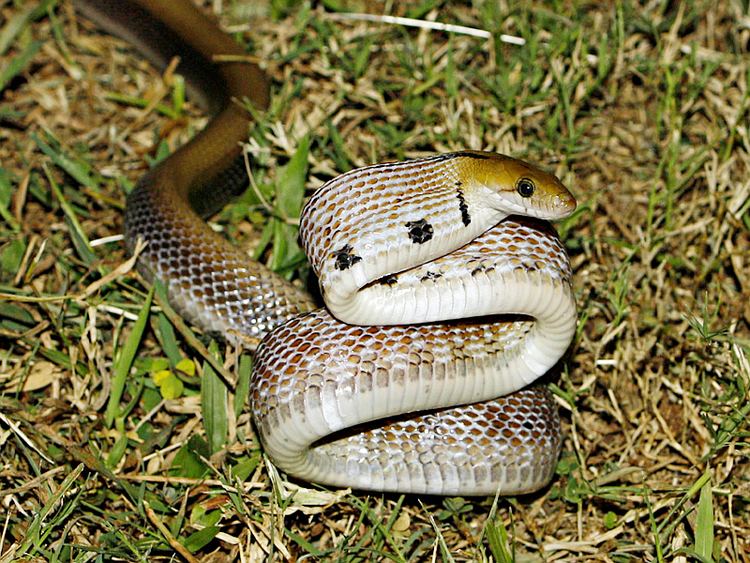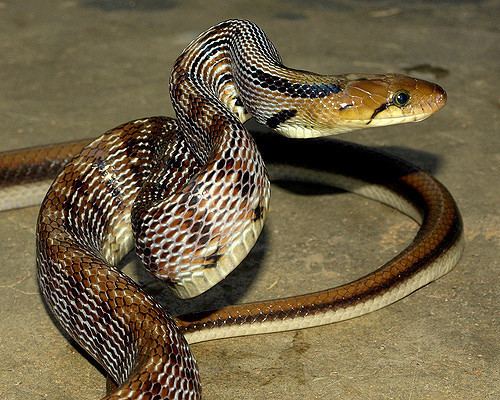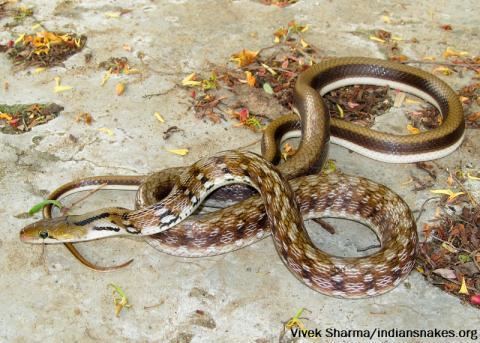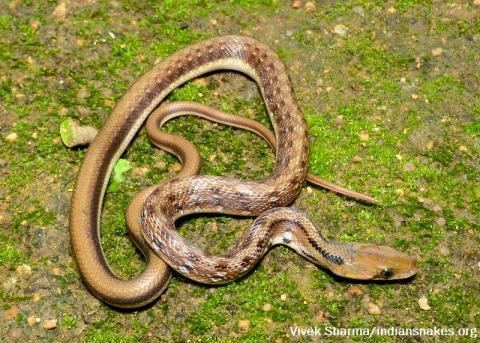Suborder Serpentes Subfamily Colubrinae Higher classification Coelognathus Order Scaled reptiles | Subphylum Vertebrata Genus Coelognathus Phylum Chordata Rank Species | |
 | ||
Similar Snake, Coelognathus, Reptile, Coelognathus helena m, Colubridae | ||
Vava suresh capturing a long trinket snake a rat snake looks like a cobra snake master 158 1 2
The trinket snake (Coelognathus helena) is a nonvenomous constrictor species of colubrid snake native to south Central Asia.
Contents
- Vava suresh capturing a long trinket snake a rat snake looks like a cobra snake master 158 1 2
- Indian trinket snake by snakemaster
- Geographic range
- Description
- Subspecies
- Habitat
- Diet
- Behaviour
- References
Indian trinket snake by snakemaster
Geographic range
C. helena is found in Sri Lanka, southern India, Pakistan (Sindh), Nepal, and Bangladesh.
Its type locality is "India: Vishakhapatnam" (Daudin, 1803).
Description
See snake scales for terms used.
The rostral is a little broader than deep, and visible from above. The suture between the internasals is much shorter than that between the prefrontals. The frontal is as long as its distance from the end of the snout, but shorter than the parietals. The loreal is somewhat longer than deep. One large preocular and two postoculars are present. The temporals are arranged 2+2 or 2+3. There are 9 (exceptionally 10 or 11) upper labials, and the fifth and sixth (or fourth, fifth, and sixth) enter the eye. There are 5 or 6 lower labials in contact with the anterior chin shields. The anterior chin shields are as long as or a little longer than the posterior chin shields.

The dorsal scales are in 23 to 27 rows at midbody, smooth, or feebly keeled on the posterior part of the body and on the tail. The ventrals number 220-265; the anal plate is entire; and the subcaudals number 75-94.

The young are pale brown above, with black crossbands, each crossband enclosing four to six white ocelli. The adults are darker brown, with a transverse series of squarish black spots, or with more or less distinct traces of the color pattern of the young. There is a vertical black streak below the eye, and an oblique black streak behind the eye. Some specimens have a white, black-edged collar; others have two black longitudinal streaks on the head; and others are intermediate in this respect. The lower parts are yellowish, with or without a few small black spots, sometimes with a more or less distinct festooned marking on each side.
Adults may attain a total length of 4.5 ft (1.4 m), which includes a tail 10 in (25 cm) long.
Subspecies

In addition to the nominotypical subspecies, Coelognathus helena helena, the subspecies Coelognathus helena monticollaris is recognized as being valid.
Habitat

A terrestrial snake, C. helena lives in termite mounds, but also prefers low heights, old trees, wood piles, around old houses, dense vegetation, etc.
Diet
The trinket snake feeds on rodents, other small mammals, and lizards.
Behaviour

Diurnal and highly active, C. helena is noted for its temper and will strike repeatedly if molested. The males of this species are generally more aggressive than the females. Its bites are often very damaging due to its inward pointing teeth.
